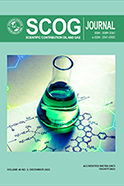Best Practices to Achieve Optimal Geothermal Drilling Performance in A Cost-Effective Manner: Case Study of the Fastest Geothermal Well Drilling in Java and Sumatra
DOI:
https://doi.org/10.29017/SCOG.46.3.1591Keywords:
drilling efficiency, geothermal drilling, drilling practice, m/daysAbstract
Indonesia, recognized for possessing substantial geothermal energy potential, is working towards harnessing the resource to achieve numerous objectives. Among the primary challenges encountered is the considerable expense of geothermal drilling. One of the most significant obstacles to achieving this objective is the high drilling cost, which constitutes 35-40% of the total cost of geothermal energy development. The drilling cost is mainly affected by the time needed to drill one well because the faster the time, the lower the cost. Therefore, this research analyzed drilling activities, identified the fastest and most effective methods for optimal geothermal drilling performance, and reduced costs. The research also determined the factors that contributed to the sustained status of Well X as the fastest well drilled in the past decade. The methodology comprised literature review, data collection through adequate background on well and geothermal field, and data analysis. The result showed that the fastest drilling operation of a geothermal well in Indonesia in 2012 occured in West Java (Well X) for only 9.9 days with 1736.5 meters (mMD). Meanwhile, in 2021, Well Y in Sumatra spent 21.74 days to reach a depth of 2200 mMD. The use of a single-run and clean-out Bottom Hole Assembly (BHA) throughout the entire section affected the drilling duration and significantly reduced the inner side cleaning time, respectively. The cost of Well Y drilling, achieved using the best performance of two wells, reduced drilling costs by 19.2%.
References
ESMAP. 2012. “Geothermal Handbook : Planning and Financing Power Generation.†World Bank Technical Report 002/12: 1–164.
Finger, John, and Doug Blankenship. 2010. “Handbook of Best Practices for Geothermal Drilling.†Sandia Report (SAND2010-6048). …, no. December: 84, Figure 2. http://artikel-software.com/file/geothermal drilling handbook. pdf.
Hartono, Yudi. 2023. “Pedoman Efisiensi Biaya Pengeboran Sumur Panas Bumi.†EBTKE 143 (1): NL1_18-NL1_19. https://doi.org/10.1541/ieejeiss.143.nl1_18.
Loeppke, Glen E., David A. Glowka, and Elton K. Wright. 1990. “Design and Evaluation of Lost-Circulation Materials for Severe Environments.†JPT, Journal of Petroleum Technology 42 (3): 328–37. https://doi.org/10.2118/18022-PA.
Macini, Paolo, and Ezio Mesini. 1994. “Rock-Bit Wear in Ultra-Hot Holes.†Society of Petroleum Engineers - Rock Mechanics in Petroleum Engineering 1994, 223–30. https://doi.org/10.2523/28055-ms.
Mensa-Wilmot, Graham, Rufino Cotanda, and Dexter Pazziuagan. 2023. “Geothermal Drilling - Collaborative and Holistic Applications Specific Solutions Drive Consistent Improvement in Drilling Efficiency and Operational Costs.†IADC/SPE International Drilling Conference.
NACE International. 2003. NACE MR0175, Petroleum, and Natural Gas Industries - Materials for Use in H2S Environments in Oil and Gas Production - Part 2: Cracking-Resistant Carbon and Low Alloy Steel, and the Use of Cast Iron. Vol. 2001.
Schlumberger. 2011. “Overview of Drilling Operations.†Oilfield Review Autumn, no. 2002: 1–20.
Thorhallsson, Sverrir, and Bjorn Mar Sveinbjornsson. 2014. “Geothermal Drilling Cost and Drilling Effectiveness.†United Nations University Geothermal Training Programme, no. December.
Unocal Geothermal Div. 1989. “Performance of Beta Titanium in a Salton Sea Field Geothermal Production Well.â€
Downloads
Published
Issue
Section
License
Copyright (c) 2023 SCIENTIFIC CONTRIBUTIONS OIL AND GAS (SCOG)

This work is licensed under a Creative Commons Attribution 4.0 International License.
Authors are free to Share — copy and redistribute the material in any medium or format for any purpose, even commercially Adapt — remix, transform, and build upon the material for any purpose, even commercially.
The licensor cannot revoke these freedoms as long as you follow the license terms, under the following terms Attribution — You must give appropriate credit , provide a link to the license, and indicate if changes were made . You may do so in any reasonable manner, but not in any way that suggests the licensor endorses you or your use.
No additional restrictions — You may not apply legal terms or technological measures that legally restrict others from doing anything the license permits.














